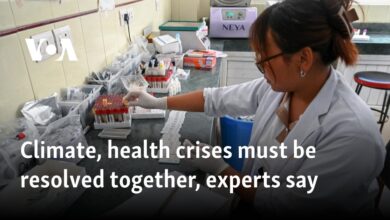Chicago's 'invisible problem': LGBTQ+ youth disproportionately impacted by homelessness

CHICAGO — November is National Homeless Youth Awareness month, a time to recognize what some experts call an “invisible problem” in Chicago, where 12,000 young adults find themselves without stable housing on any given night, according to the Chicago Coalition to End Homelessness.
Among that group, however housing advocates say there’s an acute problem faced by the LGBTQ+ community.
According to a study by Chapin Hall, a research organization formerly affiliated with the University of Chicago, LGBTQ+ young adults are 120 percent more likely to be homeless than their straight peers. The group makes up only 7 percent of the country’s total youth population, but they account for 40 percent of all young people experiencing homelessness in the country.
“LGBTQ youth were way overrepresented among that population,” said Amy Dworsky, a senior research fellow Chapin Hall.
She said that a variety of reasons, ranging from drug abuse to violence and from mental illness to poverty, can lead to homelessness in general. But in the case of LGBTQ youth, it’s typically a single factor: they were simply being themselves.
“These young people, they’re homeless not because of some bad behavior on their part. It’s not their fault that they’re homeless. It’s largely a lot of systemic factors, so we should really be doing all we can to help them find housing and stay housed,” Dworsky said.
One example is William Morgan, 21, from Chicago’s Austin neighborhood.
“I’ve been bullied all of high school, elementary school, so I’ve been through it all,” he said. “It was just really bad.”
Morgan was living with his aunt and was kicked out shortly after he came out. Now, he’s living at Covenant House Illinois, one of the organizations working to provide a safe space for the unhoused LGBTQ youth population.
“We provide wrap-around comprehensive services to young people experiencing housing instability,” said CEO Susan Reyna-Guerrero. “It’s in our signage, and in our space and in our staff that we have being reflective of the young people we serve.”
The newly renovated East Garfield Park shelter next to the Chicago Transit Authority’s Green Line is exclusively focused on 18-to-24-year-olds. Nearly a quarter of the shelter’s residents identify as LGBTQ+.
“We know that the LGBTQ+ population, many times they’re seeking safety and sanctuary outside their home because their home is not welcoming, and being able to find spaces that recognize them and provide affirming services is very difficult,” Reyna-Guerrero said.
Covenant house provides beds for more than 50 people every night, but congregate rooms can create conflicts.
“Those are challenging spaces for young people, particularly our trans youth. That’s one of the things we have – nonbinary bedrooms just to make sure we’re providing a safe welcoming space for them,” Reyna-Guerrero said.
Unlike the chronic adult homelessness, visible in tent cities or panhandlers on the streets, youth homelessness can be an invisible problem.
“So, they’re often doing things like couch surfing, doubling up, so they’re not as visible as chronically homeless adults for example,” Dworsky said. “That’s why people don’t really realize how big a problem this is.”




